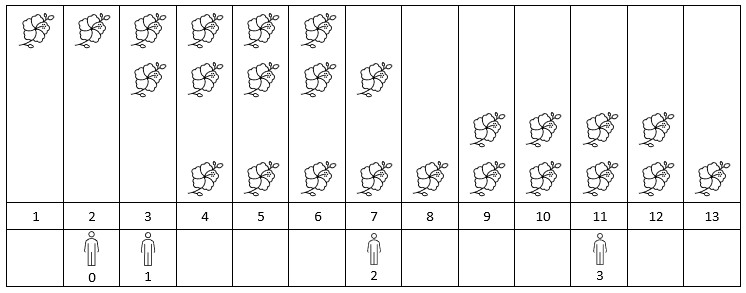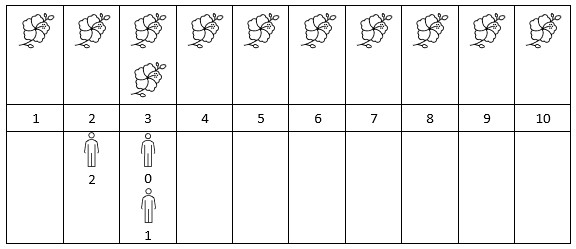Class Solution
- java.lang.Object
-
- g2201_2300.s2251_number_of_flowers_in_full_bloom.Solution
-
public class Solution extends Object
2251 - Number of Flowers in Full Bloom.Hard
You are given a 0-indexed 2D integer array
flowers, whereflowers[i] = [starti, endi]means theithflower will be in full bloom fromstartitoendi( inclusive ). You are also given a 0-indexed integer arraypersonsof sizen, wherepersons[i]is the time that theithperson will arrive to see the flowers.Return an integer array
answerof sizen, whereanswer[i]is the number of flowers that are in full bloom when theithperson arrives.Example 1:

Input: flowers = [[1,6],[3,7],[9,12],[4,13]], persons = [2,3,7,11]
Output: [1,2,2,2]
Explanation: The figure above shows the times when the flowers are in full bloom and when the people arrive. For each person, we return the number of flowers in full bloom during their arrival.
Example 2:

Input: flowers = [[1,10],[3,3]], persons = [3,3,2]
Output: [2,2,1]
Explanation: The figure above shows the times when the flowers are in full bloom and when the people arrive. For each person, we return the number of flowers in full bloom during their arrival.
Constraints:
1 <= flowers.length <= 5 * 104flowers[i].length == 21 <= starti <= endi <= 1091 <= persons.length <= 5 * 1041 <= persons[i] <= 109
-
-
Constructor Summary
Constructors Constructor Description Solution()
-
Method Summary
All Methods Instance Methods Concrete Methods Modifier and Type Method Description int[]fullBloomFlowers(int[][] flowers, int[] persons)
-